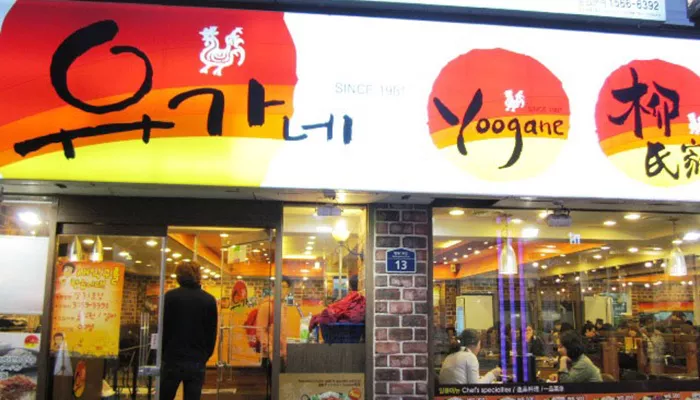In the vibrant landscape of Korean fast food, Yoogane stands out as a leading brand, particularly known for its delicious Dak Galbi. However, it faces stiff competition from Gimgane, another prominent player in the market. This article will explore the dynamics between these two brands, highlighting Gimgane as Yoogane’s biggest competitor and delving into their unique offerings, market strategies, and overall impact on the fast food scene in South Korea.
Understanding Yoogane
Yoogane franchise was founded in Busan, South Korea, in 1981. The brand has built a strong reputation for its signature dish, Dak Galbi, which consists of marinated chicken stir-fried with vegetables and rice cakes in a spicy sauce. The unique aspect of Yoogane is its interactive dining experience, where the food is cooked in front of the customers on a hot iron plate.
This not only enhances the flavor but also engages diners in the cooking process.
Over the years, Yoogane has expanded its menu to include various fusion dishes, such as Dak Galbi Fried Rice, which has become a favorite among customers. The brand emphasizes affordability and quality, making it a popular choice for students and young professionals.
SEE ALSO: Why Is Yoogane A Good Franchise?
Introducing Gimgane
Gimgane, which translates to “Kim’s Place,” was established in 1994 and has since become one of the largest fast food chains in South Korea. It specializes in Gimbap, a Korean dish made of rice and various fillings rolled in seaweed. Gimgane has a diverse menu that includes not only Gimbap but also other popular Korean street foods like Ramyeon, Udon noodles, and various rice dishes.
Gimgane’s success can be attributed to its focus on fresh ingredients and efficient delivery services. The brand has developed a robust logistics system that ensures the timely delivery of fresh produce to its franchise locations, maintaining high standards of food quality.
Market Presence And Expansion
Both Yoogane franchise and Gimgane franchise have established a strong presence in South Korea, but their approaches to expansion and market reach differ significantly.
Yoogane’s Expansion Strategy
Yoogane franchise has focused on expanding its brand internationally, with locations in various countries across Asia. The brand has made efforts to adapt its menu to cater to local tastes while maintaining the essence of Korean cuisine. This international expansion has helped Yoogane solidify its reputation as a global ambassador of Korean food.
Gimgane’s Growth and Strategy
Gimgane, on the other hand, has concentrated on dominating the domestic market. With over 500 franchise outlets across South Korea, Gimgane has established itself as a household name. The brand’s commitment to quality and customer satisfaction has allowed it to thrive in a competitive landscape.
Gimgane has also ventured into international markets, particularly in China and Australia, leveraging its successful business model to attract new customers. The brand focuses on maintaining a consistent taste across its outlets, ensuring that customers receive the same quality of food regardless of location.
Menu Offerings: A Comparative Analysis
The menus of Yoogane and Gimgane reflect their distinct culinary identities and customer preferences.
Yoogane’s Menu Highlights
Dak Galbi: The flagship dish, featuring marinated chicken cooked with vegetables and rice cakes.
Dak Galbi Fried Rice: A fusion dish that combines the flavors of Dak Galbi with fried rice.
Side Dishes: Includes various banchan (Korean side dishes) that complement the main offerings.
Yoogane’s menu is centered around its core dish, Dak Galbi, and its variations. The brand emphasizes bold flavors and a unique dining experience, attracting customers who enjoy interactive meals.
Gimgane’s Menu Highlights
Gimbap: A variety of Gimbap rolls filled with ingredients like vegetables, meats, and fish.
Bunshik: Popular Korean street food, including Tteokbokki (spicy rice cakes) and fish cakes.
Noodle Dishes: Offering Ramyeon and Udon, appealing to customers looking for quick and satisfying meals.
Gimgane’s menu is diverse, catering to a wide range of tastes and preferences. The focus on Gimbap allows the brand to stand out in the fast food market, providing a healthier alternative to traditional fast food options.
Customer Experience And Engagement
Both brands prioritize customer experience, but they approach it differently.
Yoogane’s Interactive Dining
Yoogane’s dining experience is built around the concept of cooking at the table. This interactive approach not only entertains customers but also allows them to customize their meals according to their preferences. The ambiance of Yoogane restaurants is lively and engaging, making it a popular choice for groups and families.
Gimgane’s Focus on Convenience
Gimgane emphasizes convenience and efficiency in its service. With a strong delivery system, Gimgane caters to customers who prefer to enjoy their meals at home. The brand’s commitment to providing fresh ingredients and maintaining quality during delivery has earned it a loyal customer base.
Marketing Strategies
Both Yoogane and Gimgane employ effective marketing strategies to attract and retain customers.
Yoogane’s Branding and Promotions
Yoogane franchise has built a strong brand identity through its unique offerings and engaging marketing campaigns. The brand often collaborates with influencers and food bloggers to promote its dishes on social media platforms. Seasonal promotions and limited-time offers also play a significant role in attracting new customers.
Gimgane’s Community Engagement
Gimgane focuses on community engagement and customer loyalty programs. The brand frequently participates in local events and festivals, promoting its products and connecting with potential customers. Gimgane also offers loyalty rewards to encourage repeat visits, fostering a sense of community among its patrons.
Conclusion
In the competitive landscape of Korean fast food, Gimgane emerges as Yoogane’s biggest competitor. Both brands have established themselves as leaders in the market, each with its unique offerings and strategies. While Yoogane franchise focuses on its signature Dak Galbi and interactive dining experience, Gimgane excels in providing a diverse menu centered around Gimbap and efficient delivery services.
As the fast food industry continues to evolve, both brands will need to adapt to changing consumer preferences and market trends. By leveraging their strengths and addressing challenges, Yoogane and Gimgane can continue to thrive and capture the hearts of customers in South Korea and beyond.

